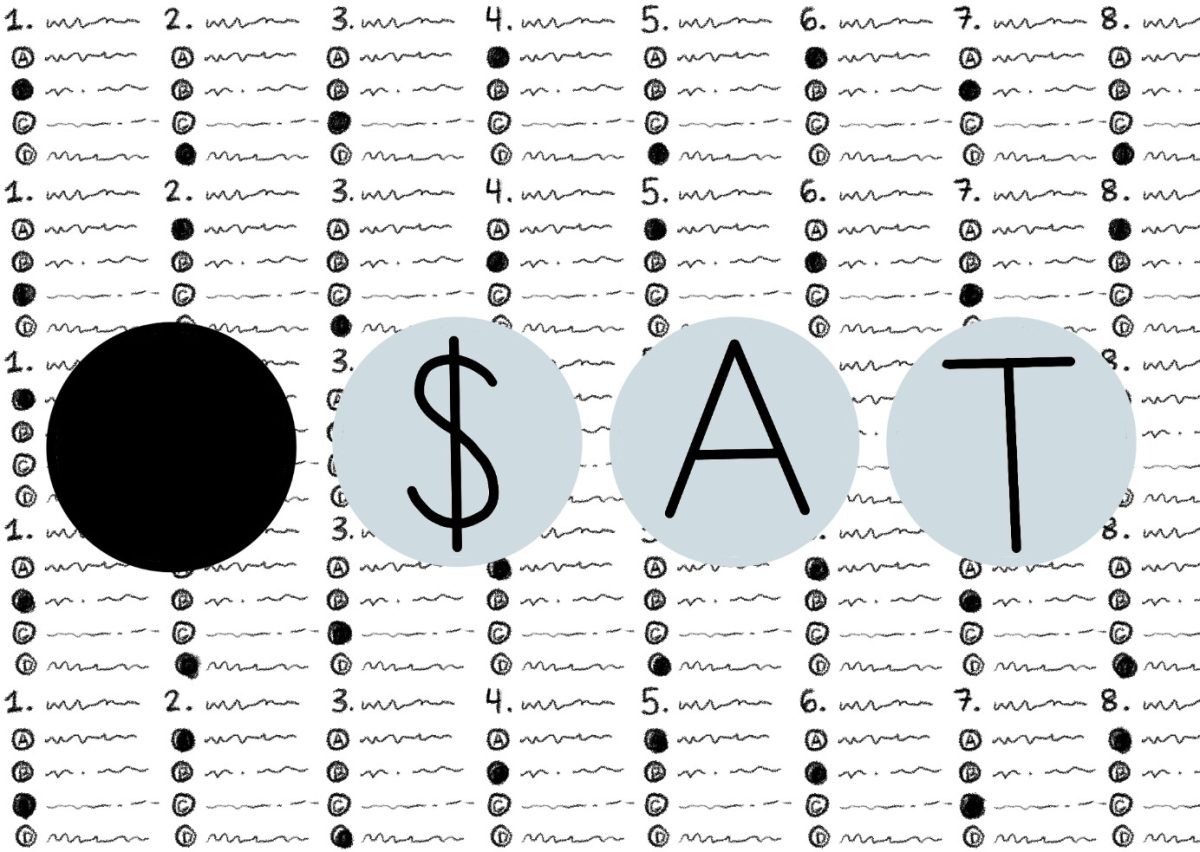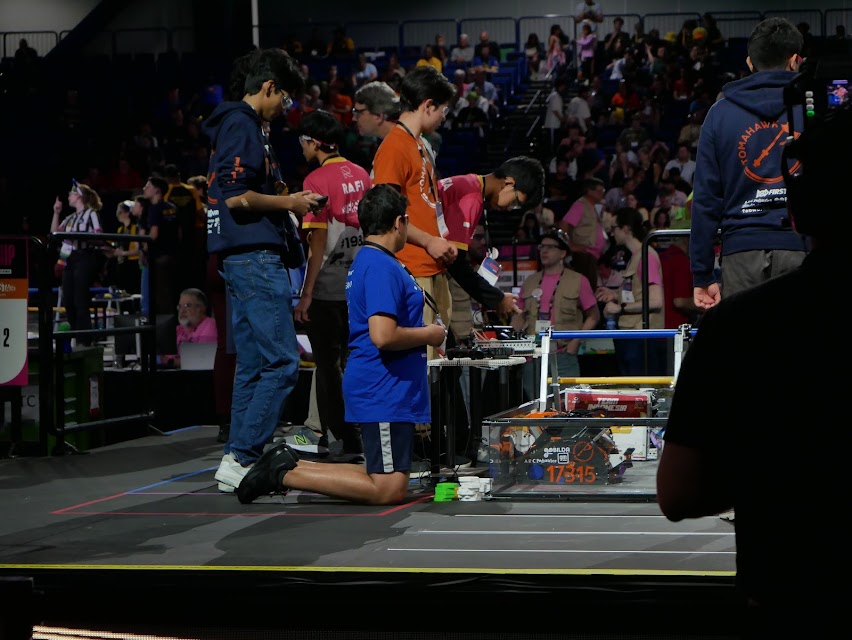As juniors crack open their SAT workbooks, cram Khan Academy, and check testing room assignments in preparation for the SAT School Day on Wednesday, March 6, universities across the country are revising their testing policies, repealing moves toward test-optionality.
Once an acronym for Scholastic Aptitude Test, the SAT is a multiple-choice standardized exam that consists of two sections: Reading and Writing, and Math. For college admissions purposes and scholarship opportunities, the SAT is primarily used as a standardized measure of a student’s knowledge and college readiness.
But the SAT doesn’t measure knowledge.
It measures wealth.
A 2023 study on the nexus between household income and signposts of post-secondary scholastic success illuminates the dependence of admissions components on socioeconomic status— and how high scores are most accessible to a select, wealthy few. Students whose family incomes were in the top 20% were seven times as likely as those in the bottom 20% to score above a 1300 out of 1600.
In addition to making up only 2.4% of those who scored at least a 1300, students whose families were in the bottom 20% of earners were less likely to take the test, with only one in five taking either the SAT or ACT. A litany of costs keep economically disadvantaged students out of the testing room. While Westwood offers a free test on the SAT School Day, many schools in the U.S. don’t.
Students who want to take the SAT must pay a $60 testing fee, an additional $30 if they signed up late, and $31 if they would like to receive their scores before the two to four-week processing time. If college applicants want to send their scores to more than four schools, they must pay $12 for each score sent.
College Board, the not-for-profit organization behind the SAT, offers fee waivers to low-income students who qualify for any of the various forms of government assistance. But not every student facing financial hardship experiences it to a degree adequate for aid. This system of assistance to those in poverty is extremely beneficial, however, aid should be offered to more students than just the ones in specific dire circumstances. On top of that, the student may want extra test preparation in order to achieve the score they want, but good SAT programs in the Westwood area can cost anywhere from $700 to thousands of dollars.
Disparity doesn’t stop outside the school gate. As affluent students attend SAT prep classes, free preparation options remain limited. The most popular free resource is Khan Academy’s Official SAT Practice. Partnered with College Board, the program offers instructional videos, sample problems, and practice tests — and has proven to be effective. In a 2017 press release, College Board stated that students who studied for 20 hours with Khan Academy’s Official SAT Practice averaged a score gain of 115 points, an increase almost double the average score gain in students who did not utilize it.
However, the problem of inadequate SAT access multiplies, affecting the college application process. While the SAT isn’t the only deciding factor in college admissions, it is certainly one of the many contributors to getting into a good college. In the class of 2023 alone, over 1.9 million students took the SAT, an increase after the pandemic decline. The SAT is still regarded as a crucial stepping stone to college education. However, it gives the students who could spend thousands of dollars on test preparation an edge on their college applications.
Further exacerbating discrepancies, high SAT scores open many opportunities for scholarships, and even meeting a certain score minimum can give students automatic admission. Low-income students are the ones who need these opportunities the most, not already wealthy students who can afford test preparation.
Many point to race as a source of disparity for SAT testing, something that won’t change with its transition to the screen. Traditionally red-lined minority communities suffer from a systemic lack of proper education with underfunded, neglected schools and communities, leaving them without proper educational resources offered to majority white neighborhoods and schools from the beginning. Majority Black and Latino communities are also found more likely to be low income, leading to a gap in SAT readiness.
The SAT’s connection with race is nuanced. Many students in minority communities suffer from stereotype threat, a psychological phenomenon in which a person is concerned about conforming to a negative stereotype about a group they belong to. This can often not only cause students to feel as if they don’t belong, but can also lead to a predetermined outcome of failure, causing a loss of confidence when taking the test, and subsequently, worse performance. Racial discrimination enabled by the SAT not only favors affluent white students, but it also leads to a lack of diversity and representation in top colleges. When colleges are left without this crucial element, it creates a positive feedback loop, reinforcing the stereotype threat when students of color don’t see themselves represented, or even making it in their dream schools
It’s no secret that wealth heralds educational access. From outright bribery in the case of the Varsity Blues scandal to institutions gate kept by high prices — such as prep schools and college consulting firms — resources privy to a select few reign the admissions cycle, discouraging the very chance of higher education for many. Success should be attainable for all students, not just the richest or whitest. Education is a right. Higher education should not be a pay-to-play system that sidelines low income students in favor of those whose money allows them enormous privilege. It is important not to be complicit in a broken system, just because what is believed to be the norm. Dismantling systemic inequalities within education is no small feat, but fixing the favoritism within the SAT is a start.














